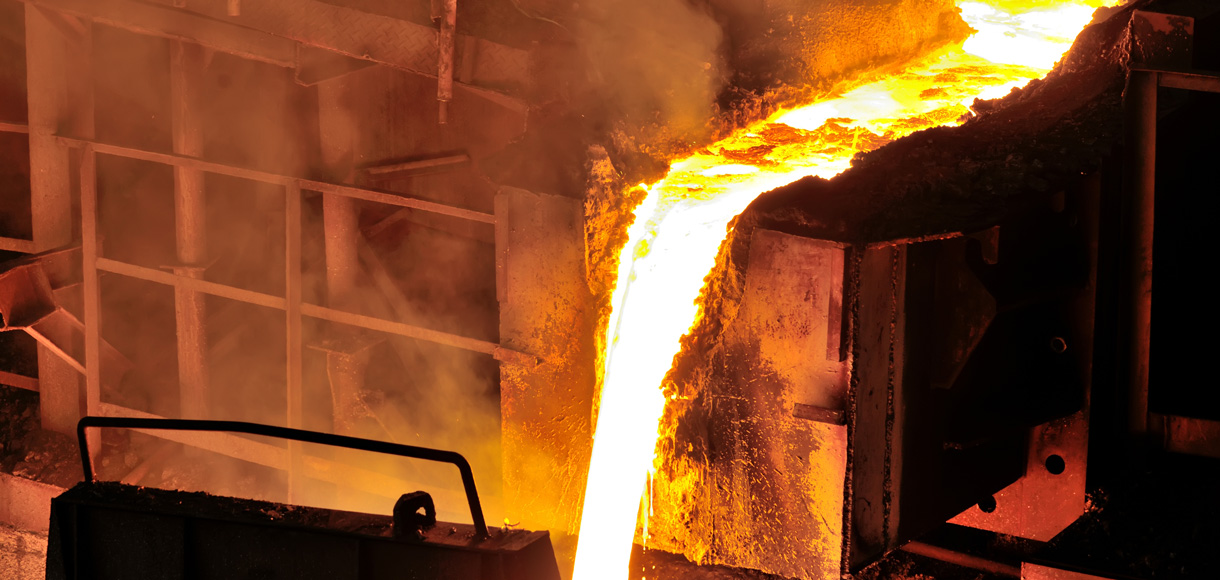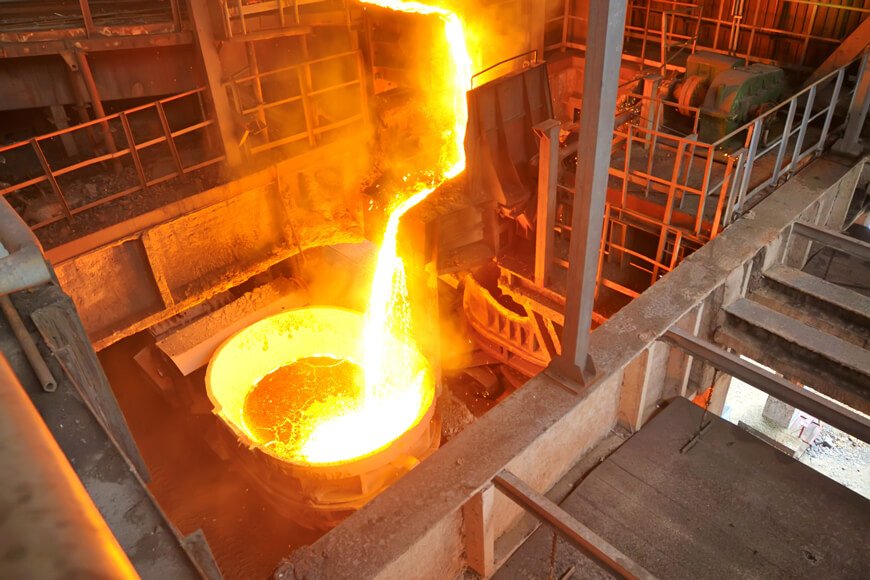Discover the Innovations and Techniques worldwide of Casting Shop
The Casting Foundry industry is undertaking significant transformation. Advanced products and innovative techniques are redefining traditional practices. Automation and robotics are simplifying procedures, while lasting approaches are becoming essential. New mold and mildew layouts and additive production are offering extraordinary opportunities. Quality control procedures are additionally advancing, making certain integrity in production. As these trends proceed to shape the future of spreading, one must take into consideration how they will influence the market in its entirety.
The Function of Advanced Products in Spreading
Advanced materials play a necessary duty in enhancing the effectiveness and quality of casting processes. They add to improved thermal stability, minimized shrinking, and raised longevity of actors products. Developments such as sophisticated porcelains and composite products supply higher resistance to mechanical and thermal anxieties, making it possible for the manufacturing of elaborate styles with exceptional surface finishes. These products also promote far better mold and core manufacturing, bring about lowered defects and improved dimensional accuracy.
The usage of alloys with customized residential properties enables for enhanced performance in certain applications, such as aerospace and auto industries. As factories take on advanced materials, they can achieve higher power performance and lower waste generation, lining up with sustainability goals. The integration of these products not just streamlines manufacturing yet likewise enhances the general competition of Foundry operations in a swiftly progressing market, noting a pivotal shift in conventional Casting techniques.
Automation and Robotics in Foundry Operations
Automation and robotics are transforming Foundry operations by improving efficiency and precision. These technologies improve molding processes, reducing labor prices and minimizing human error. Consequently, manufacturers are progressively taking on automated systems to enhance production capacities and fulfill rising need.
Benefits of Automation
The combination of automation and robotics into Foundry procedures has transformed standard manufacturing methods, yielding substantial advantages. Improved productivity rankings among the primary benefits, as automated systems run continually, decreasing cycle times and boosting outcome. Additionally, automation boosts accuracy and uniformity in casting procedures, decreasing problems and guaranteeing better products.
Expense cost savings likewise emerge from lowered labor costs and reduced product waste, permitting more reliable resource application. Safety is an additional essential benefit; automation reduces the threat of human injury by taking care of harmful jobs. Furthermore, real-time tracking abilities enable better information collection and evaluation, helping with informed decision-making. Generally, the adoption of automation and robotics significantly maximizes functional efficiency, causing boosted competitiveness in the Foundry market.
Robotics in Molding Processes
How can robotics boost molding processes in foundries? Robotics substantially enhances efficiency and accuracy in molding procedures. Automated systems can handle recurring tasks, such as putting patterns and putting molten metal, decreasing the risk of human error and ensuring regular high quality. Additionally, robotic arms geared up with sophisticated sensors facilitate detailed mold styles, permitting for complex geometries that standard methods struggle to achieve.
Robotics can operate in dangerous settings, minimizing the demand for human intervention in hazardous tasks. This not only boosts worker safety but likewise enhances production prices. By incorporating robotics right into molding procedures, factories can accomplish greater throughput, lowered cycle times, and reduced operational costs, placing themselves competitively in a developing industry landscape.
Sustainable Practices in Casting Foundries
As the need for eco responsible production increases, casting shops are taking on sustainable techniques to minimize their eco-friendly footprint. Many shops are applying recycling programs for steel scrap, minimizing waste and preserving sources. By reusing materials, they can especially lower the raw material intake that adds to ecological deterioration.
In addition, energy-efficient processes are being incorporated right into operations. Foundries are purchasing sustainable energy sources, such as solar or wind power, to reduce dependence on fossil fuels. This change not just reduces greenhouse gas exhausts but also enhances cost savings over time.

Technologies in Mold Design and Fabrication
Current improvements in 3D printing modern technology are reinventing mold design and fabrication in the Casting Foundry sector. Furthermore, the intro of lasting materials is enhancing the ecological footprint of manufacturing procedures. Accuracy mold engineering methods further contribute to raised effectiveness and precision in the production of complicated components.
3D Printing Innovation Advancements
Although standard mold style and manufacture approaches have served the Foundry industry for decades, improvements in 3D printing modern technology are transforming these processes. By making it possible for the creation of very intricate geometries, 3D printing allows for more intricate designs that were cost-prohibitive or previously impossible. This technology lessens lead times considerably, as models and molds can be produced in a matter of hours as opposed to weeks go to the website (Casting Foundry). Additionally, 3D printing helps with rapid version, permitting designers to examine and change designs promptly based upon feedback. The capacity to create i was reading this mold and mildews utilizing different products boosts adaptability and allows tailored options for particular Casting applications. Consequently, 3D printing technology is reshaping the landscape of mold and mildew style and manufacture in the Casting Foundry industry
Lasting Product Innovations
The change towards lasting techniques in the Casting Foundry sector is obtaining momentum, with technologies in material selection playing a pivotal role. Shops are increasingly embracing eco-friendly materials, such as bio-based resins and recycled steels, to decrease ecological impact. These sustainable materials not just decrease waste but also boost the general efficiency of the Casting process. Innovations in mold style, such as the use of 3D printing innovation for creating molds with less product, additional add to sustainability initiatives. Additionally, advancements in finishing innovations permit minimized discharges during casting procedures. By focusing on sustainable product technologies, the Casting Foundry sector is moving towards an extra responsible future, straightening production methods with ecological stewardship and resource conservation.
Accuracy Mold Engineering Techniques
As innovations in innovation remain to improve the Casting Foundry industry, precision mold design techniques are becoming essential parts in boosting production top quality and effectiveness. These cutting-edge approaches utilize computer-aided style (CAD) and computer mathematical control (CNC) machining to produce mold and mildews with remarkable precision. Techniques such as additive manufacturing allow for complicated geometries that standard methods can not attain, substantially minimizing lead times and material waste. On top of that, the integration of simulation software application aids in forecasting mold behavior during casting, allowing the optimization of layouts before physical production. This positive approach not just improves the total yield but additionally assures that molds can be customized to fulfill specific application requirements, paving the means for even more flexible and innovative Casting options.
Additive Production: A Video Game Changer for Casting
While standard Casting methods have actually long been the backbone of production, additive manufacturing is swiftly transforming the landscape of casting factories. This innovative method, typically described as 3D printing, allows for the creation of complex geometries that were formerly unattainable with conventional methods. By making use of digital designs, factories can generate molds and cores with accuracy and rate, significantly lowering lead times and material waste.
Additive production also facilitates the manufacturing of tailored components, making it possible for suppliers to react promptly to details customer needs, therefore boosting competitiveness. In addition, the assimilation of additive processes into Foundry procedures can simplify process, boosting general efficiency. As the market embraces these developments, it is poised to redefine the future of spreading, providing new possibilities for creativity and versatility. Consequently, additive production stands as a critical growth, improving exactly how factories come close to layout and production in a quickly developing market.
Top Quality Control Techniques in Modern Foundries
Quality assurance strategies in modern-day shops are essential for guaranteeing that actors products satisfy rigid visit this page market criteria and customer requirements. These techniques include a selection of techniques, consisting of analytical process control (copyright), which checks manufacturing processes to get rid of and determine variability. Non-destructive testing (NDT) approaches, such as ultrasonic testing and X-ray examination, are used to find inner problems without harming the item. Additionally, the execution of automated examination systems improves both precision and effectiveness, permitting real-time high quality evaluations. Material traceability is one more important part, ensuring that each batch of resources can be tracked throughout the manufacturing process. Contemporary foundries progressively make use of computer-aided layout (CAD) and simulation software to anticipate prospective defects before spreading, helping with positive high quality administration. By integrating these innovative quality assurance strategies, factories can considerably reduce waste, enhance product reliability, and keep affordable advantage out there.
The Future of Spreading: Predictions and trends

The trend toward sustainable practices is getting energy, with foundries significantly embracing environmentally friendly products and procedures. This change not just addresses environmental worries yet likewise straightens with customer need for greener products.
Furthermore, the rise of additive production is anticipated to revolutionize traditional Casting techniques, enabling much more intricate styles and reduced material waste.
As these patterns materialize, the Casting market is most likely to experience substantial changes in production techniques, market needs, and workforce needs. Business that welcome these modifications will certainly be well-positioned to prosper in an increasingly competitive landscape.
Often Asked Questions
What Are the Typical Kinds Of Casting Procedures Used Today?
The common kinds of casting processes utilized today include sand spreading, investment casting, pass away casting, and centrifugal spreading. Each method varies in application, complexity, and material, catering to diverse industrial and production needs.
How Does Casting Contrast to Other Production Methods?
Casting, contrasted to various other making methods, uses advantages like intricate form creation and product efficiency. Nevertheless, it might involve much longer lead times and higher initial expenses, making it less suitable for quick production compared to methods like machining.

What Industries Primarily Count on Casting Foundries?
Industries such as automobile, building and construction, aerospace, and machinery greatly rely on casting shops. These sectors use casting for producing complex metal parts, guaranteeing sturdiness and precision in their products, which are essential for functional efficiency.
What Are the Typical Precaution in Casting Foundries?
Common safety procedures in casting factories include personal protective tools, appropriate air flow, regular devices upkeep, safety and security training, and emergency feedback methods. These practices help minimize hazards connected with heats, harmful products, and hefty equipment procedures.
Exactly How Can I Begin an Occupation in Casting Foundry Operations?
To start an occupation in casting Foundry operations, one should seek pertinent education, look for apprenticeships, gain hands-on experience, and acquaint themselves with safety procedures and equipment utilized in the Foundry market to improve employability.
Current improvements in 3D printing technology are transforming mold design and construction in the Casting Foundry field. The shift towards lasting methods in the Casting Foundry sector is gaining momentum, with technologies in material option playing a critical function. As advancements in technology proceed to improve the Casting Foundry industry, accuracy mold design techniques are arising as critical components in improving manufacturing quality and performance. While conventional Casting approaches have long been the backbone of manufacturing, additive production is quickly changing the landscape of casting shops. Modern shops increasingly make use of computer-aided design (CAD) and simulation software application to anticipate possible issues before casting, promoting proactive high quality monitoring.